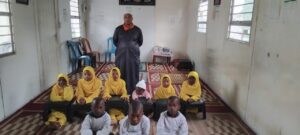
On November 23, 1942, a Japanese submarine torpedoed the Indian/British liner, the SS Tilawa, that set sail to Durban. Many lost their lives. The tragedy was dubbed the “Indian Titanic.” Ismail Suder reports.
While World War 2 was raging, a passenger/cargo liner, the SS Tilawa, slipped out of the port in Bombay on November 20, 1942, bound for East Africa and Durban, but it did not make it – the steamer was torpedoed and sunk by a Japanese submarine off the Seychelles coast.
On board were 958 souls, which included 222 crew members. Records show that 678 passengers were rescued, but tragically, 280 people lost their lives.
The survivors on the rafts, deployed after the first torpedo attack from the Japanese submarine 1-29 on Monday, November 23, 1942, were picked up by the battleship SS Birmingham and returned to Bombay with the bedraggled survivors.
The sinking of the SS Tilawa and the tragic loss of lives 82 years ago was re-lived when the SS Tilawa Foundation South Africa recently invited some 200 relatives of the survivors – and those that perished – to Durban to commemorate the horror of that fateful night. The sinking of the SS Tilawa has since come to be known as the “Indian Titanic”.
Indian Families of the survivors – and those that perished – came from across South Africa, including from India, Canada, and the UK, to attend the 82nd commemoration of the deliberate sinking of the SS Tilawa.
The event, held at the auditorium of the Regent Business School in central Durban, was meant to memorialise the tragic loss of their loved ones and to give closure to one of the most tragic events of their lives. Representatives of the Japanese and British governments were invited, but they did not respond. Those who attended included Muslim, Hindu and Christian families of loved ones who either survived or perished.
The event featured an exhibition of large photographs of the SS Tilawa taken before its tragic end. The guests listened attentively as representatives of the SS Tilawa Foundation South Africa, including relatives of the survivors, gave explicit accounts of the events leading up to the sinking of the ship. For many in the room, the accounts of the tragedy were deeply moving,
The original passenger list is available online and reflects familiar Indian surnames such as: Bobat; Randeree; Tar Mohamed; Sema; Hassim; Barday’; Valli; Bayat; Daya; Patel; Tikley; Bhayla, Navsaria and many more.
Earlier in the day, guests were taken on a boat trip in Durban Harbour to help them form a picture of what it might have been like had the SS Tilawa reached this port.
The 10 000-ton steamship of the British India Steam Navigation Company, and captained by F Robinson, departed from Bombay’s Ballard Pier at exactly 5 pm. After a mad scramble to get on board, passengers breathed a sigh of relief as the ship blared its horn and headed out towards the Indian Ocean. Its intended destination was the Kenyan port of Mombasa, thereafter to Lourenco Marques (now Maputo) and finally to Durban to drop off the remaining passengers – and also to offload 60 tons of bullion silver for the mint of the British-controlled Union of South Africa.
Many of the passengers on board were returning to their adopted countries in East Africa whilst others were coming to find jobs and carve up new lives for themselves in a foreign land.
Three days into the journey, survivors recalled that it was a bright moonlight night. Passengers on the upper decks were urged to switch off the cabin lights to avoid detection by enemy ships. But around midnight, a torpedo was fired from a Japanese Imperial Navy submarine that was hunting “allied” ships in the Indian Ocean. The loud blast rocked the port side of the SS Tilawa, causing panic and confusion among passengers and crew.
Minutes later, an emergency siren went off, and the captain urged passengers to abandon the ship immediately. The crew worked frantically to usher confused and half-sleepy passengers towards the nine lifeboats. As the life rafts filled up, the crew tried desperately to release the pulley that would lower the rafts onto the monstrous waves below. As this was happening, a second torpedo rocked the ship on the port side, causing the vessel to rapidly take in water and sink within five minutes. The remaining 280 passengers on board, including 28 crew members, did not survive as the ship went down in a plume of smoke.
The wreckage was later found on the floor bed at a depth of 4000m, 1497km northeast of Seychelles. After struggling to survive two days on the high seas with a small ration of biscuits and water found on the lifeboat, the survivors were rescued by the crew of the navy ship, the HMS Birmingham, which was dispatched from Bombay to pick them up, thanks to the heroic efforts of the radio officer, E.B. Duncan, who managed to send a last-minute SOS telegraph message before he too went down with the ill-fated ship.
After hoisting the 778 survivors on board, the SS Birmingham made a dash to Bombay and docked after two days,
Most of the South African-based survivors have since passed on, although there are three survivors alive in other parts of the world.
One of the founders of the SS Tilawa Foundation South Africa is Haroon Tar Mahomed of Laudium.
He related to Al-Qalam the tragic story of his father, Moosa Tar Mahomed (24) and his younger brother Omar (12) who got onto a lifeboat that was being lowered with a pulley, but suddenly there was a blast from the second torpedo and the lifeboat tilted heavily to one side after it came loose at one end. The jolt caused the two brothers to lose their grip and they both fell into the sea.
“Between my father and his younger brother Omar, they had only one lifejacket. Omar was a very good swimmer and insisted that my father should wear the jacket instead of him because my father did not know how to swim”, he said
Tar Mohamed said his father managed to clamber onto a lifeboat, but unfortunately, his brother drifted away with the current, never to surface.
Said Tar Mahomed: “Throughout his life, my father was deeply traumatised by the tragedy. He didn’t want to talk about it much – and we understood the deep pain my father was going through.” His father has since passed on.
Not only did his father lose his younger brother, but also two other close relatives who were presumed drowned after apparently falling into the sea.
One well-known personality who was on the ship was Marhoom Moulana Cassim Sema, founder and principal of the Darul-Uloom, Newcastle. Moulana Sema, who was only 22-year-old, was returning home to South Africa after completing his Islamic studies. He was happy to return home as he had secured a job at the Mia’s Farm Islamic Institute, in the Transvaal.
In his memoir, Moulana Sema described his experience on the life raft as “frightening.”
“At times, huge waves like mountains lifted the boat high and then flung it back to the surface of the sea. It was very frightening and nerve-wracking. In this manner, we sailed for the rest of the night until dawn appeared. During the day, the sea was comparatively calm.
“After sailing for a few hours into the day, we spotted a steamer at a distance which gave us hope in being rescued, but after a little while it disappeared from our sight. We began feeling hungry and thirsty. Some of the crew members of the Tilawa, who were on board, broke open a survival box in which we found some thick biscuits, long aluminium containers containing fresh water, an axe and some other items. Small bits of biscuits were distributed amongst us and each was allowed to drink a few sips of fresh water as a life saving measure. I personally, because of my weakness and continuous vomiting, was completely exhausted and was unable to eat the thick biscuits. I was convinced within me, that even if we were to reach land in ten days’ time, I will not be able to survive”.
On the second day while drifting on the ocean, the rescue ship, SS Birmingham appeared and picked up hundreds of survivors.
Hope came when, while drifting on the ocean, they spotted the rescue ship, the SS Birmingham, heading towards them. The crew hoisted them aboard and headed back to Bombay.


